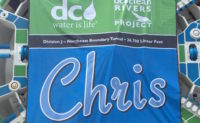A design-build team of CDM Smith, Fairfax, Va., and PC Construction, Garner, N.C., is constructing the Cambi process train and its supporting infrastructure. It will produce 100% Class A biosolids and reduce the amount of solids trucked out of the facility.
The digester also includes a combined heat and power (CHP) system that will produce 13 megawatts of electricity to support plant operations. Power generation is not among DC Water's areas of expertise, so it turned to a design-build-operate procurement for the first time, contracting with Pepco Energy Services under a 15-year, $89-million agreement.
Len Benson, DC Water chief engineer, says that taking on big-ticket regulatory-compliance and discretionary projects concurrently is unusual. "If we had our druthers, we'd concentrate solely on the Clean Rivers regulatory work," he says. "But getting [the CHP] done now makes so much sense, as the CHP's operational savings will more than offset the debt service and ultimately reduce the long-term burden on ratepayers."
DC Water estimates that when the new digester becomes fully operational early next year, it will save $20 million in annual energy and waste-trucking costs, and further shrink Blue Plains' carbon footprint.
New Challenges, New Tactics
Like most water and wastewater utilities, DC Water has long relied on traditional design-bid-build contracting. But its capital improvement program's many complexities and risks led the agency to take a closer look at design-build.
DC Water decided to make a deep commitment in alternate delivery methods. Design-build accounts for more than two-thirds of the agency's current $1.8 billion in work under construction. "It places risk where it belongs, the bids are better and we enjoy greater communication and collaboration with engineers and the contractors," Benson says.
Design-build's collaborative features were demonstrated in the ramp-up for the first tunnel, says William Edgerton, tunnel and geotechnical manager for Jacobs Associates, Alexandria, Va., and DC Water program manager for the Clean Rivers Project. Proprietary meetings among DC Water and short-listed teams enhanced mutual understanding of risks as the technical and price proposals were developed, he says.
"There was good communication between both sides before the prices got established," Edgerton says. "Not all owners may be able to do tunnels this way, but we believe it's a good model."
The two short-listed teams with the best technical scores also offered the lowest bids. "It doesn't always happen that way," notes Carlton Ray, Clean Rivers project director. "But when you work with contractors up front and they have better comfort level with the project, you're going to get better prices."








Post a comment to this article
Report Abusive Comment